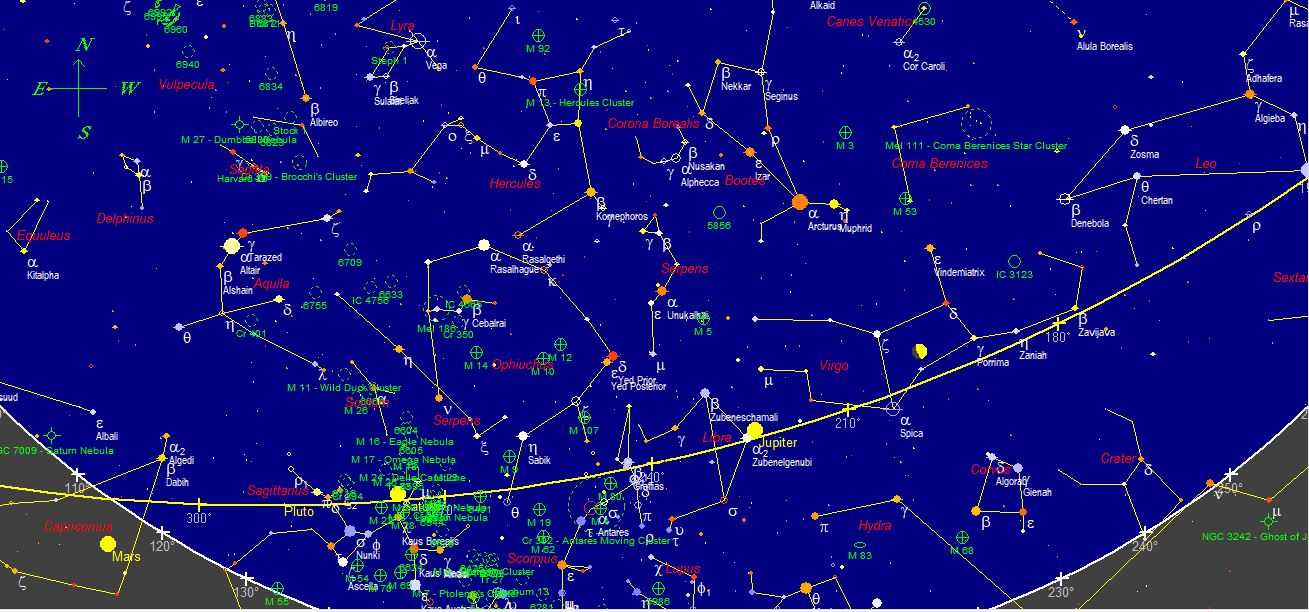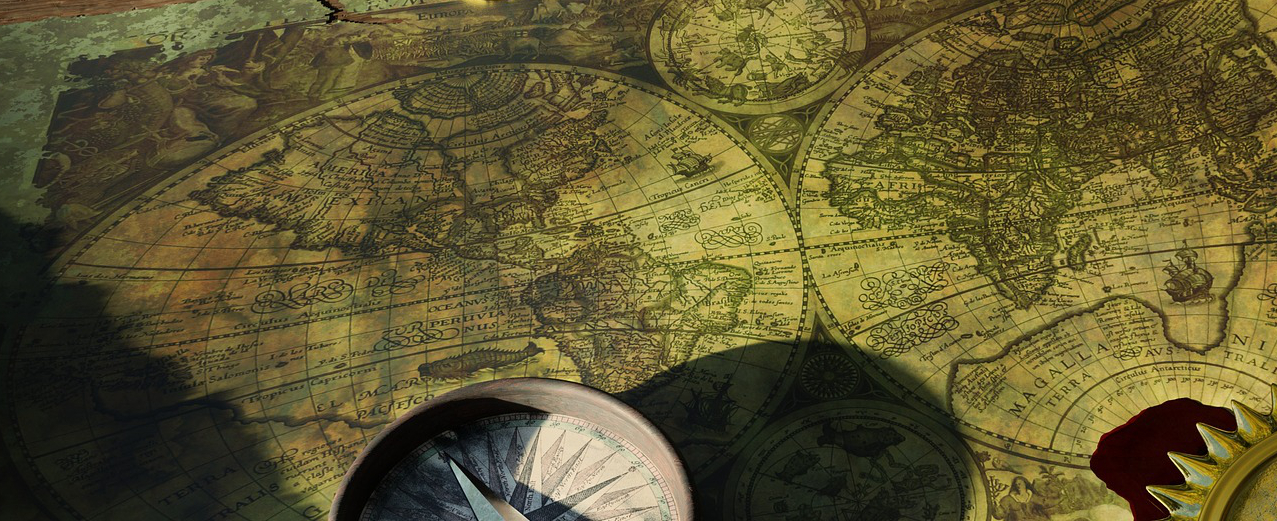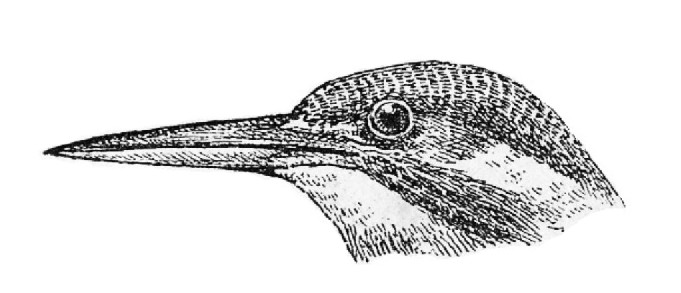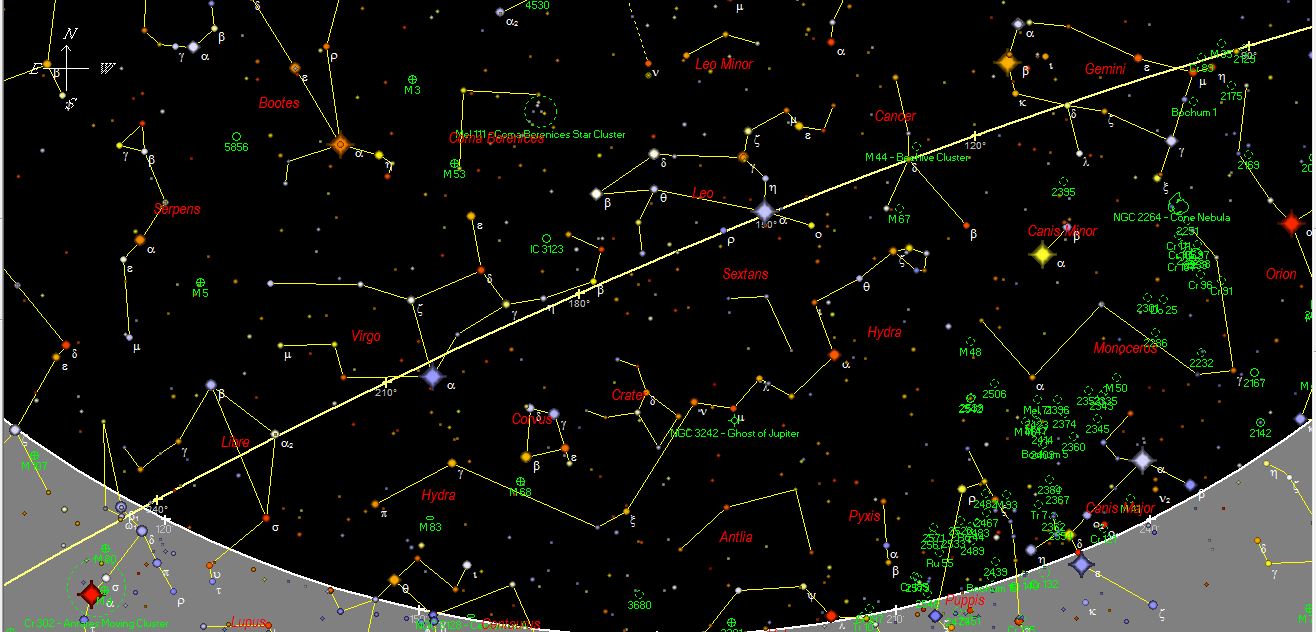
The Sun from March 12 in Pisces, passes on April 19 in Aries where it will remain until mid-May. Oriented towards South in the evening, we see from the West to the East the Taurus, the Gemini, the Cancer and the Lion. the Virgin and the Libra.
Virgo
In the April sky dominates the constellation of the Virgo appearing as a woman lying on the Eclitsch, with the head to the West and the feet to the East. The Sun is there at the time of the autumn equinox, that is when it crosses the celestial Equator from the north. to the south, passing by the descending node or Omega point on 23 September. When Vindemiatrix and Virginis rose in the east, the ancient Romans were harvesting.
The most shining star of the constellation is Spica (“spike” of wheat, in Latin) that is found following the arch formed by the tail of the Great Bear, Arturo, yellow, and then her. Called by the Arabs the “solitary”, it is white-blue and is 262 a.l .. In reality it is a binary system, formed by two bright blue stars; given the proximity between the two components, 18 million km (just over 1/10 U.A.), the tidal forces distort the shape of the stellar discs which are therefore ellipsoidal; the main star is a pulsating variable of weak amplitude with a cycle of 4 hours, the secondary one periodically eclipses the principal and also causes a slight decrease in brightness.
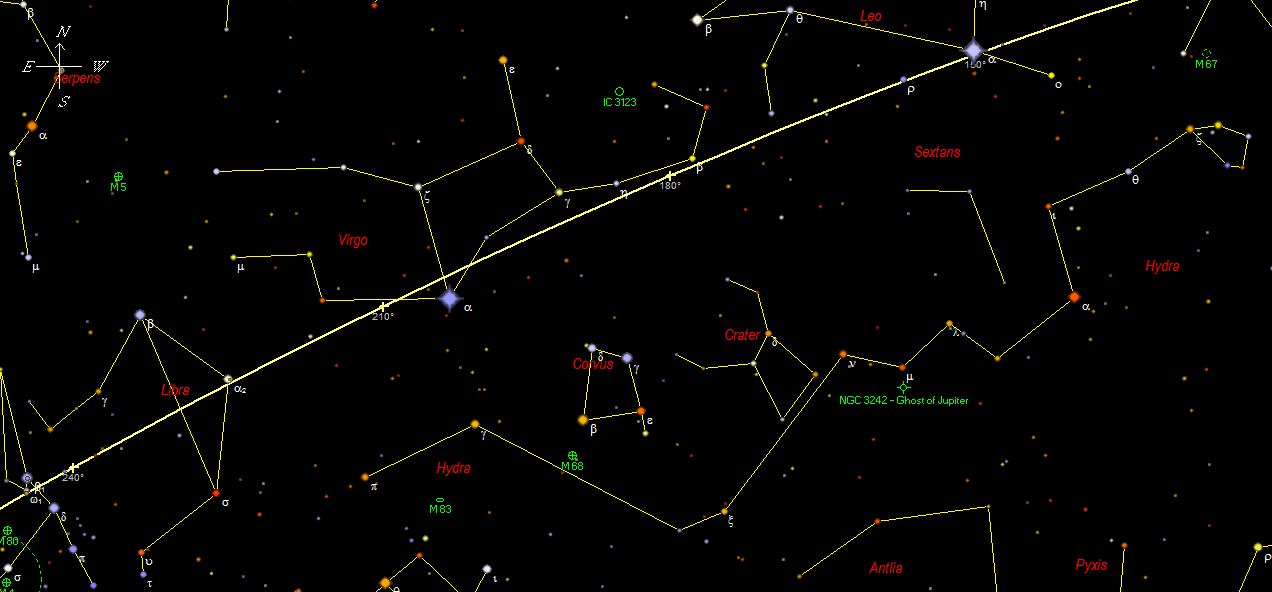
With Arturo and Denebola it forms the spring triangle
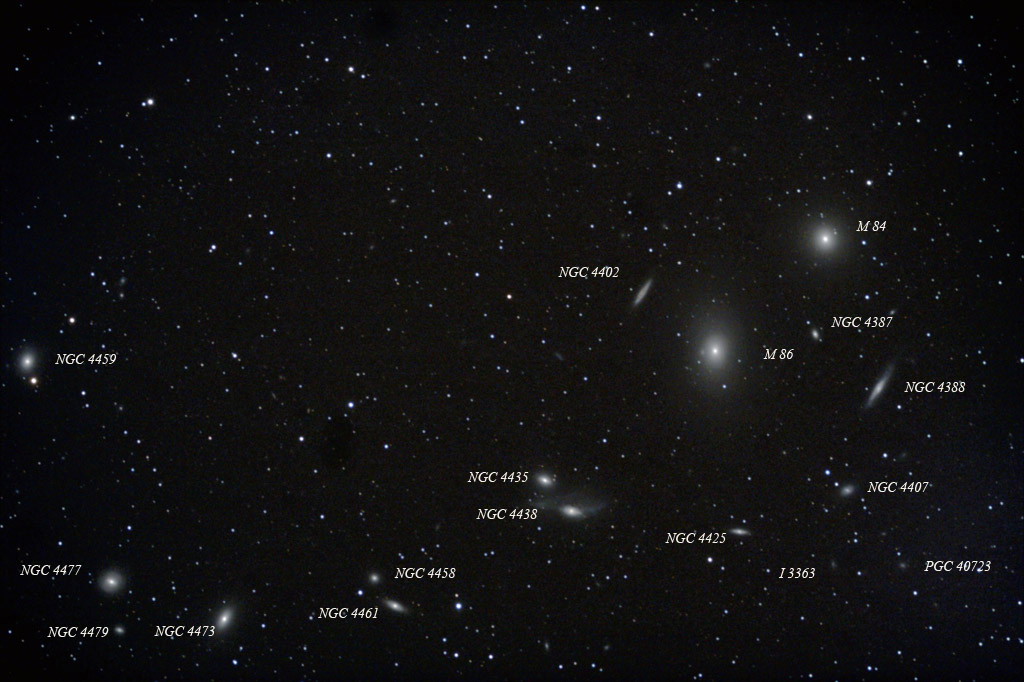
Porrima, γ Virginis, is a pair of white-yellow stars that rotate around each other over a period of 172 years. The closest proximity was reached in 2008, then they went back to get away.
The Virgo contains a huge cluster of galaxies, located in the northern region of the constellation, about 65 million a.l. Together with the neighbor of Coma Berenices, the Virgo-Coma cluster.
Among the most interesting objects of this cluster we find M60, and M84, two elliptical galaxies of ninth magnitude observable with binoculars, as well as M87 a giant elliptical galaxy, called Machine Gun, also known as radiosorgent Virgo A (probably at the center of this galaxy c ‘ it’s a huge black hole).
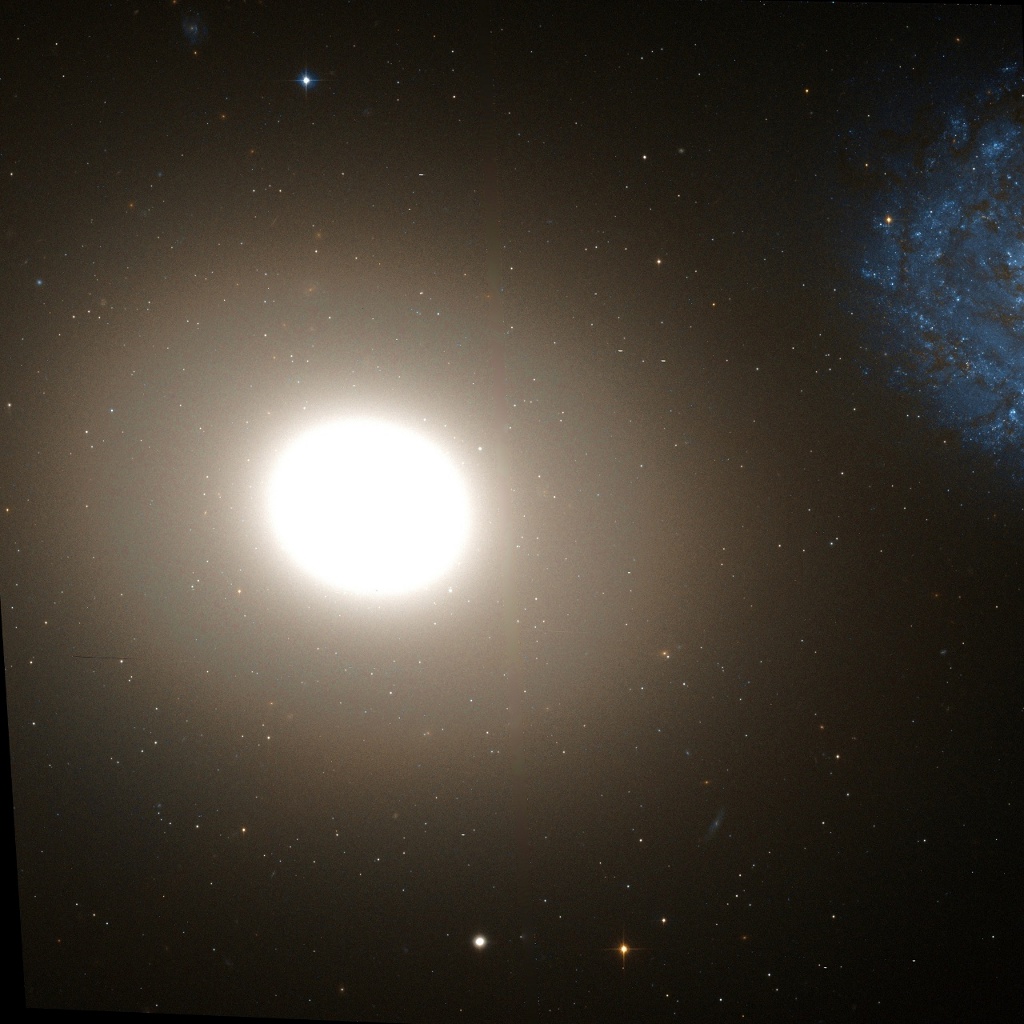
M60
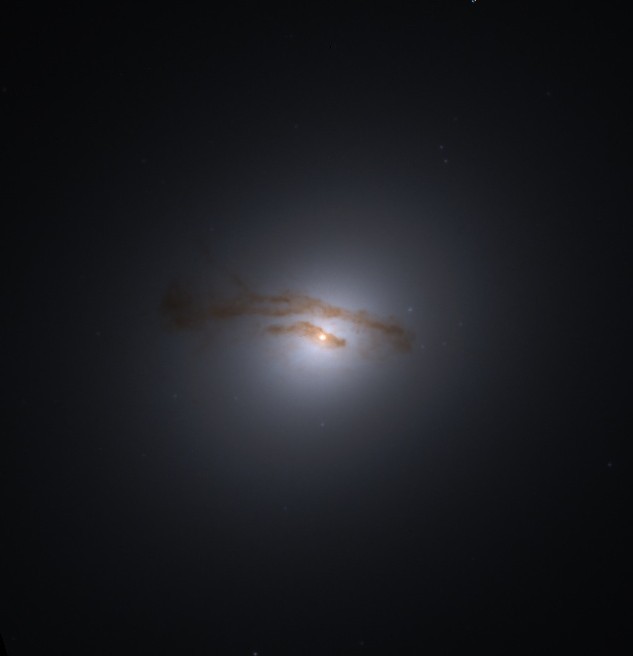
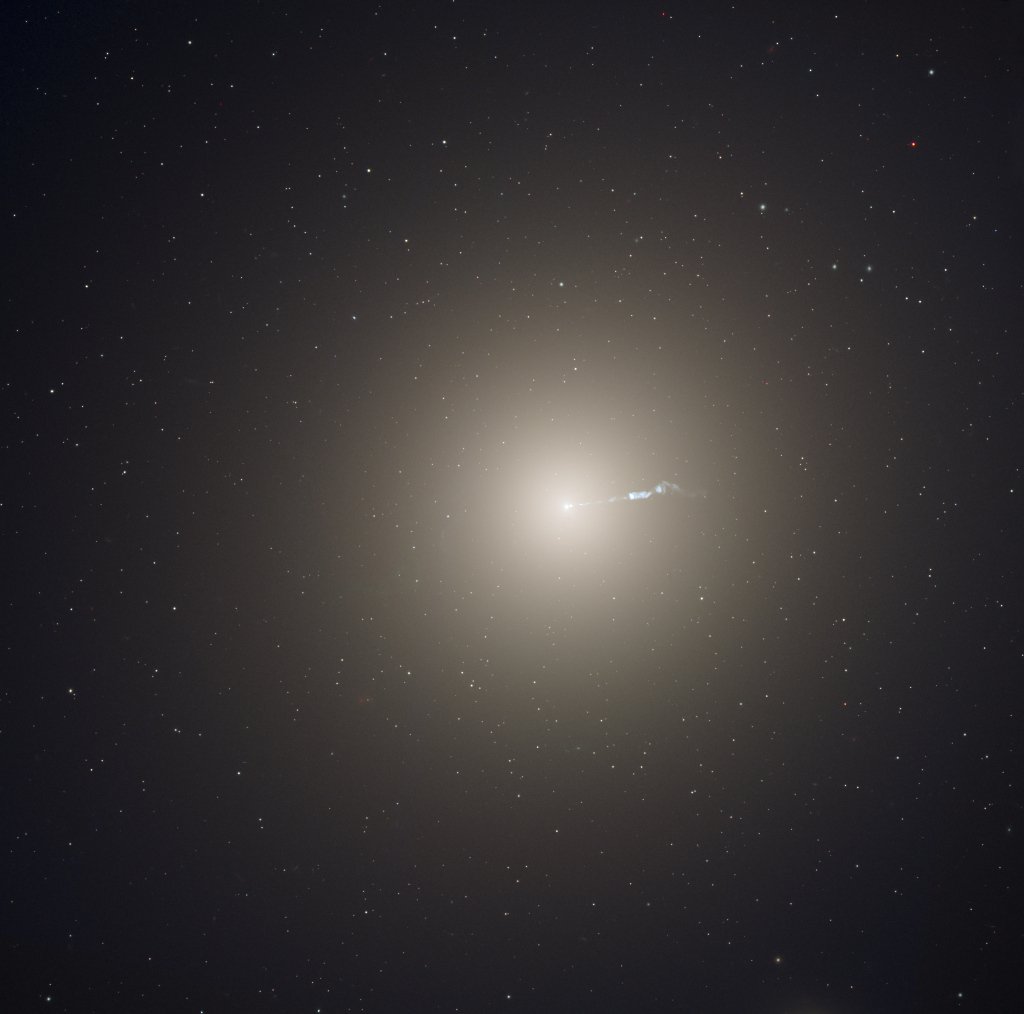
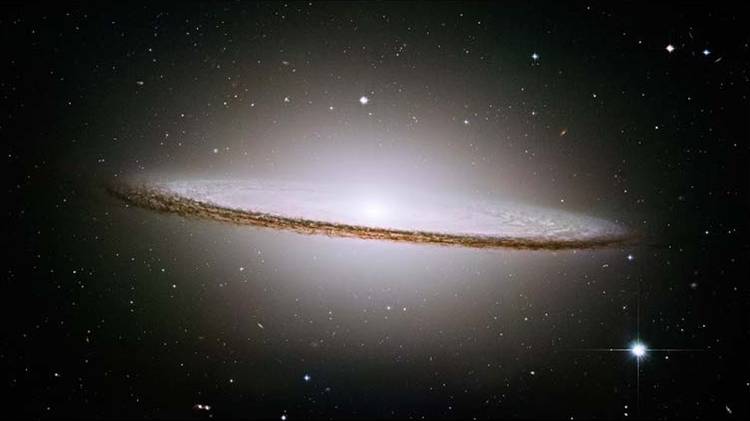
M 104
On the border with the Corvus, then, there is a beautiful galaxy that is not part of the cluster but is located half the distance from it: it is M104, a spiral galaxy also called Sombrero because of its characteristic shape. It is a giant galaxy of 130 thousand a.l. in diameter and a mass of 1,300 billion Suns.
The most interesting and certainly most studied object is 3C 273, a quasar, a very intense source of radio waves, at 3 billion a.l. brighter than 1000 galaxies. The powerful jet of high speed ejected gas protrudes into space for 150,000 a.l. (highlighted by the Chandra and Hubble space telescopes).
Mythology
There are many mythological stories associated with this constellation. However it is represented with in the left hand has an ear of wheat (Spica) and in the other a palm frond (Vindemiatrix)
A first story claims that the Virgin is Dike, the goddess of justice. Once, when the Earth lived the mythical Golden Age, Dike lived among the men, who led a happy existence, devoid of hatred and pain. When the times changed and the Silver Age began, the first quarrels arose among the human beings, and Dike went to take refuge in the mountains. When the Bronze Age and then the Iron Age came, men became prey to violence, injustice and war: Dike, disgusted, left Earth and flew to heaven.
A second story identifies the Virgin with Demeter, the goddess of crops and crops. Demeter had a daughter named Persephone, who was kidnapped by Hades, lord of the underworld, who wanted to make her his bride. Demeter asked for help to Zeus, king of the gods, who ordered Hades to return the girl to his mother: but this, during his stay in the kingdom of the dead, he had eaten some seeds of pomegranate and this prevented her from returning definitively among the beings living. Zeus then established that Persephone would spend half the year in the hereafter with Hades and the other half on Earth with her mother. For this reason, from then on Demetra began to alternate with the seasons.
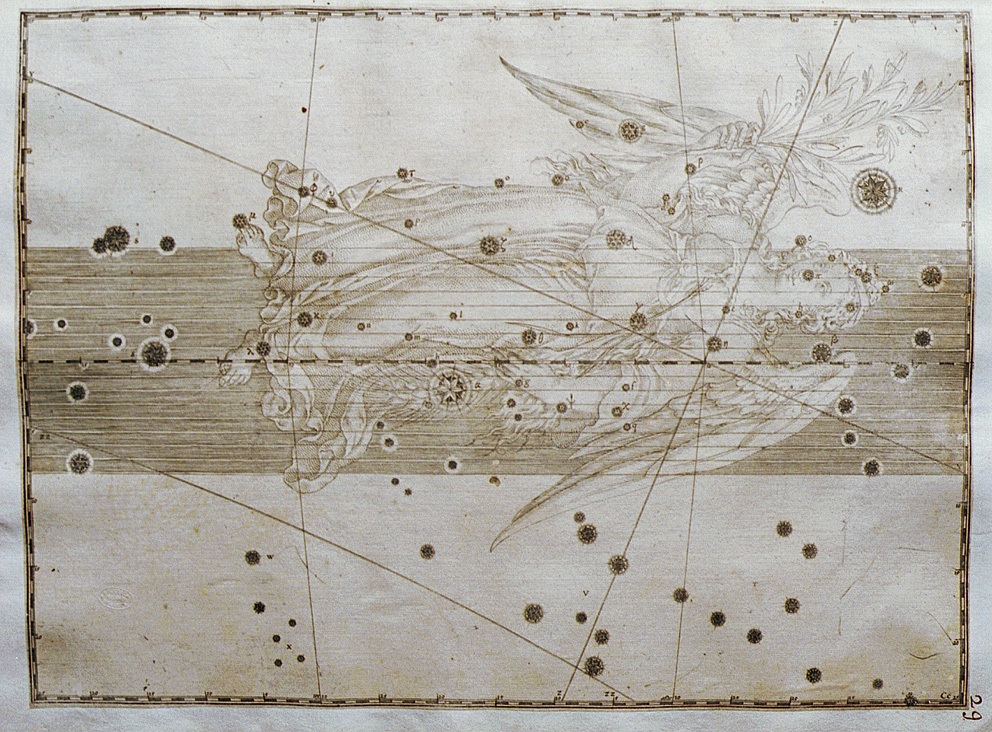
______________________________________
The maps of the sky are taken from Skymap, software downloadable in demo version from the site http://www.skymap.com
Credits
Author: Lucia Corbo. As a Natural Sciences teacher and expert in didactics of Astronomy, she has collaborated with various magazines curating articles, columns, and multimedia materials. For the Italian Ministry of Education, she edited the cd “Students show the stars” and with N. Scarpel the book “Astronomy on the net”; she promoted and coordinated the first editions of Astronomy Weeks for schools. She has held multiple refresher courses on the didactics of Science and Astronomy and Astronomy courses for students and adults, both in presence and online.
Translation by Maria Antonietta Sessa

